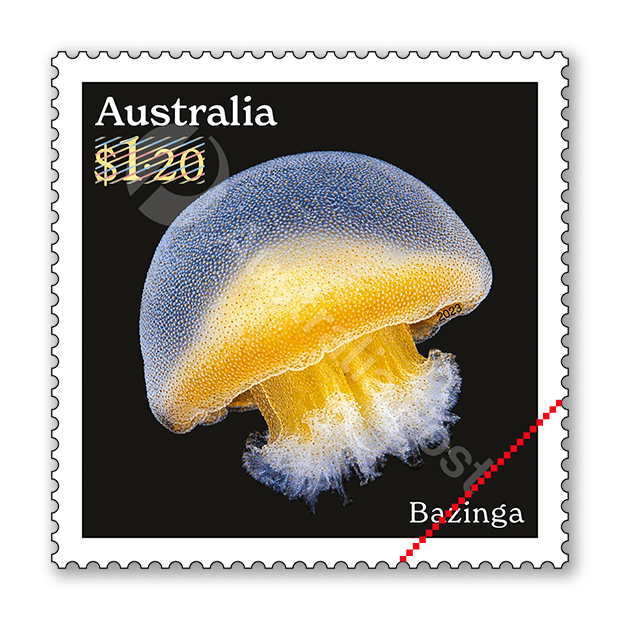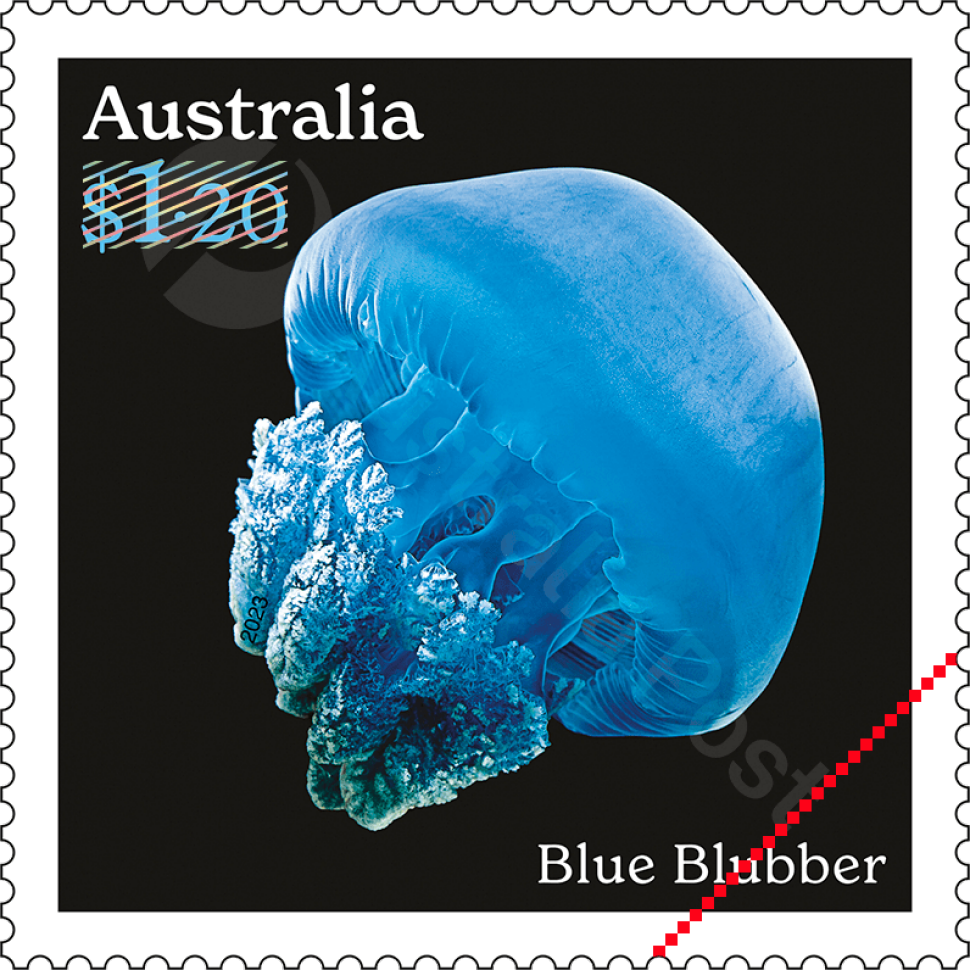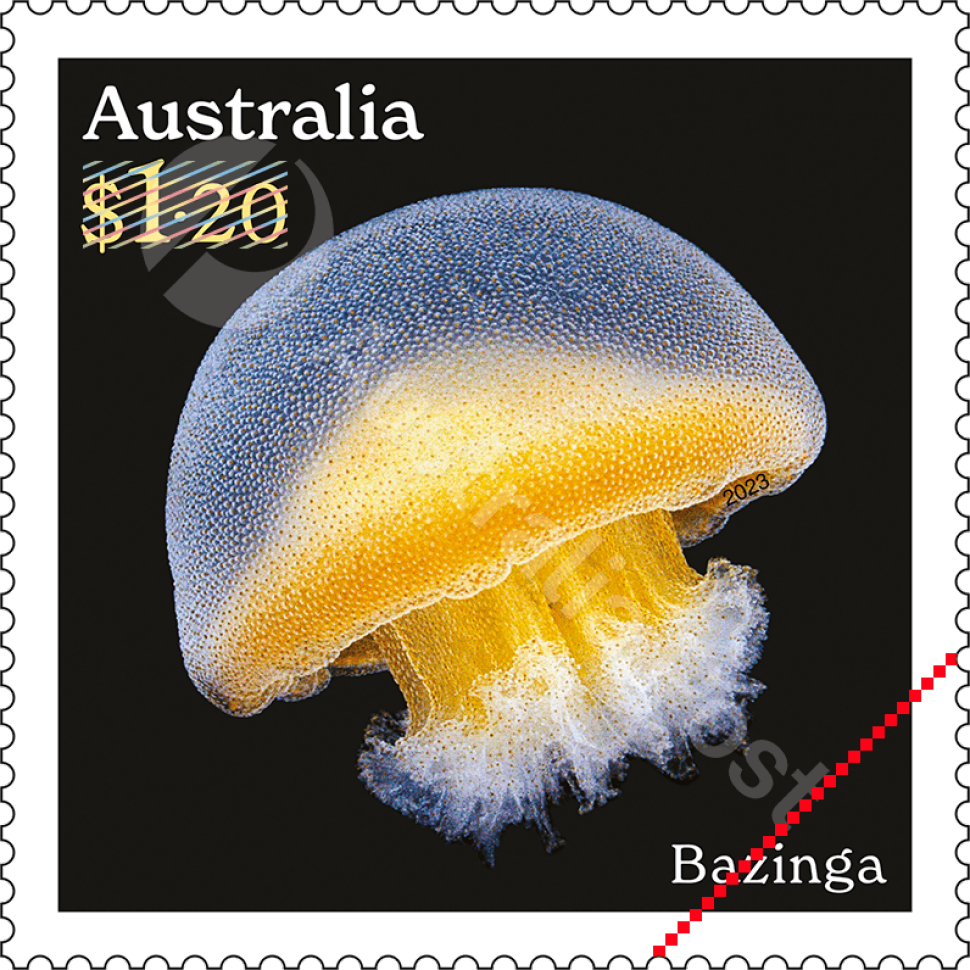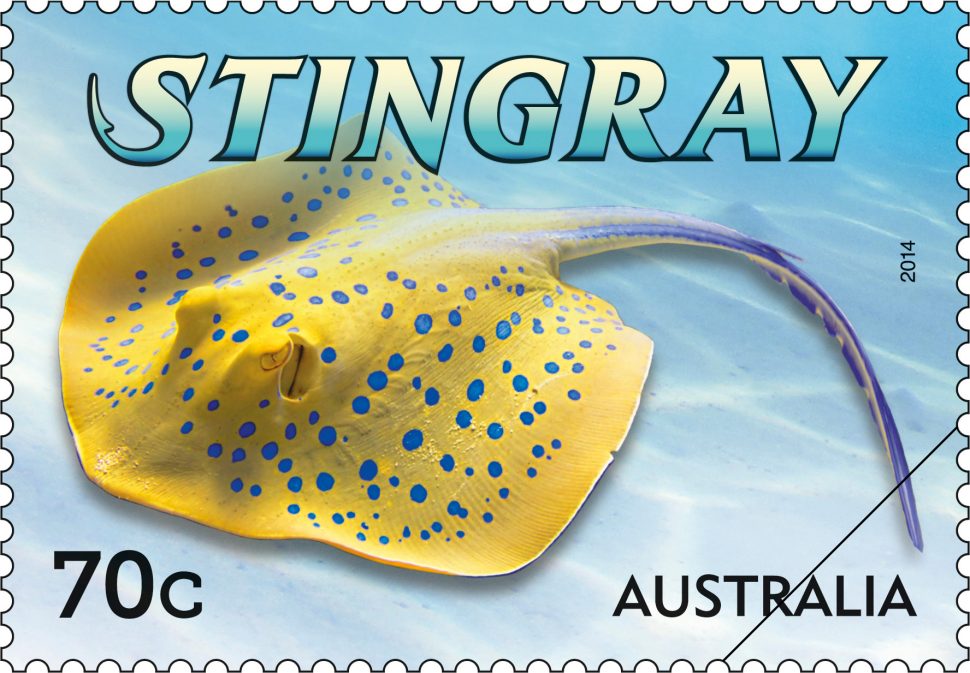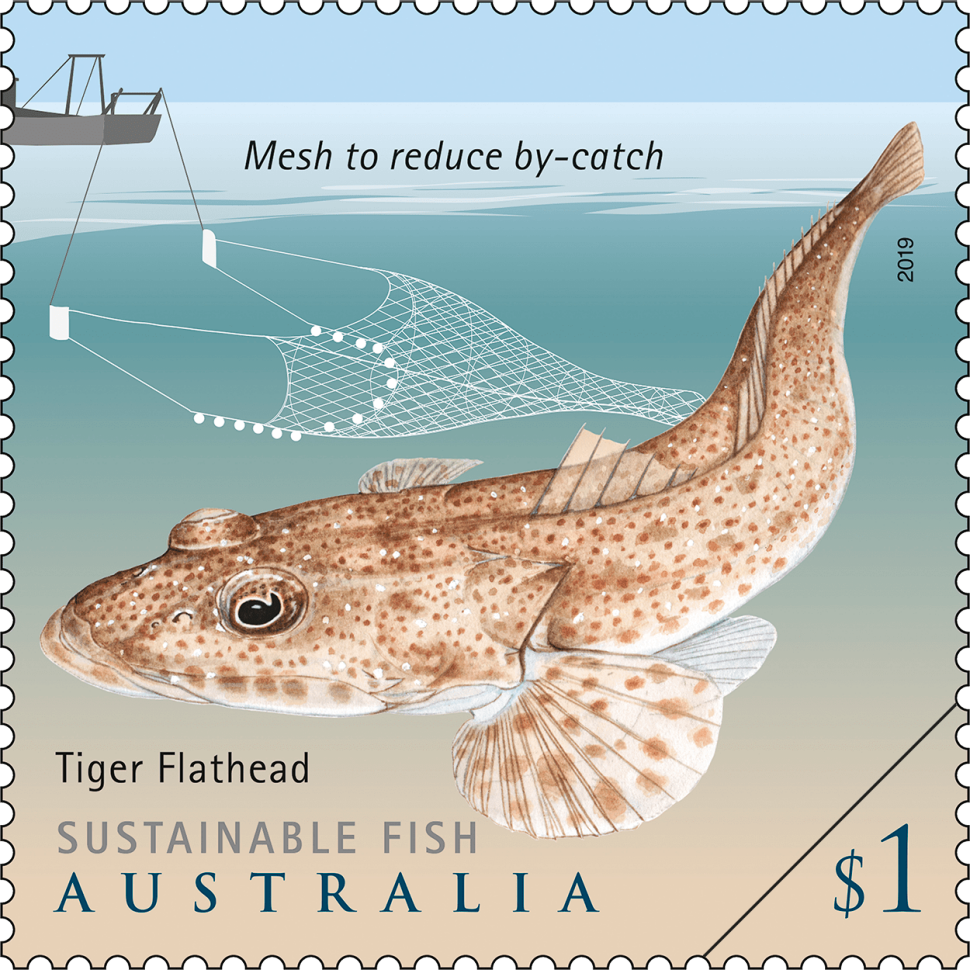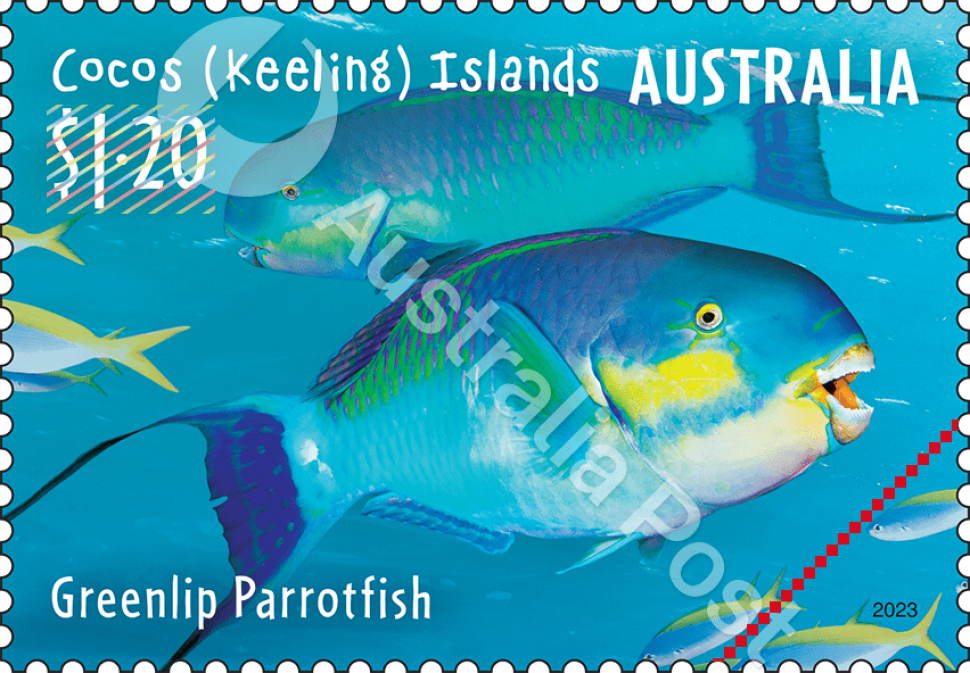Overview
Most of Australia’s jellyfish are neither dangerous to humans nor damaging to other species. There are at least 1,000 jellyfish species drifting on the currents around Australia, a high number of which are endemic. In this stamp issue, we illustrate just four of these wonders of the ocean.
The jellyfish featured in this stamp issue all started life as a tiny daisy-shaped larva known as an ephyra, budded off from a tiny polyp. Jellyfish polyps appear as pale pink fuzz on the undersides of rocks and logs and other natural (or sometimes unnatural) structures. In the right conditions, these polyps release the baby jellies, which grow extremely fast as they gorge on tiny plankton.
Most jellyfish can grow vigorously when food is abundant, or slow down or even “de-grow” when food is scarce, and many are quite tolerant of salinity and temperature fluctuations. Jellyfish can clone in at least 13 different ways, and some species are truly biologically immortal. Jellyfish have no bones, no brain and no heart, and yet they prey on species higher up the food chain than themselves; that is, they will predate the eggs and larvae of fish, crustaceans and molluscs, as well as the plankton that those larvae would eat. In some cases, jellyfish can exploit distressed habitats, acting as both a visible indicator and a driver of further distress.
Technical specifications
- Issue date
- 16 May 2023
- Issue withdrawal date
- 1 December 2023
- Denomination
- $1.20 x 4
- Stamp design
- Jason Watts, Australia Post Design Studio
- Product design
- Jason Watts, Australia Post Design Studio
- Paper: gummed
- Tullis Russell 104gsm Red Phosphor/Blue PVA Stamp Paper
- Paper: self-adhesive
- Securpost C-Print 100 P8P Non-Phosphor
- Printer
- RA Printing
- Printing process
- Offset lithography
- Stamp size (mm)
- 35 x 35
- Minisheet size (mm)
- 170 x 80
- Perforations
- 13.14 x 13.14
- Sheet layout
- Sheet of 50 (2 x 25 no design in gutter)
- FDI Postmark
- Gellibrand VIC 3239
- FDI withdrawal date
- 14 June 2023
$1.20 Lion’s Mane
At least a dozen different species of Lion’s Mane jellies are endemic to Australia, from the Top End to the tip of Tasmania. They come in a dazzling array of colours and patterns, from solid to speckled to spotted, and covering almost all the colours of the rainbow. One of our most exquisite is common in Port Phillip Bay, Victoria, in the summertime. Cyanea annaskala is distinctive from other Lion’s Mane jellies in its small size and its clear bell, or body, with deep-red oral arms, the frilly structures that hang down between the dozens of fine hairlike tentacles. Admire this one from a distance, however, as its microscopic stinging cells can produce a sharp sting.
The stamp photograph is by David Paul.
$1.20 Blue Blubber
One of Australia’s most notorious jellies is the Blue Blubber. It has an unusual distribution pattern, with blue populations in both Victoria and Queensland disrupted by a brown population in New South Wales. The peculiar colour difference of this seasonally abundant jelly is thought to be due to symbiotic algae living in the tissues of the New South Welsh jellies, similar to the symbiosis between corals and their resident algae. The algal symbionts help supplement the jellyfish’s diet, so it can grow very large very fast without having to rely on catching plankton. Catostylus makes its home in semi-enclosed bays and harbours, where sometimes it may be so plentiful that it seems you could walk across them. In these conditions, known as blooms, they can cause problems for sea bathers, net fishermen, power plants, boats and ships.
The stamp photograph is by Paul Starosta/Getty Images.
$1.20 Moon Jellyfish
Perhaps the most common jellyfish known across Australia is the Moon Jellyfish, comprising several different varieties around the coastline. The most prevalent, Aurelia coerulea, is found across southern Australia, from the Indian Ocean to the Tasman Sea. Aurelia polyps can be found in just about any marina, often blanketing the undersides of the floating pontoons. In the right conditions, the baby jellies budded off from these polyps can grow from the size of a sesame seed to as broad as a dinner plate in a matter of weeks. Towards late summer, as Aurelia matures, vast rafts of them may be found shoaling towards the surface, often around mid-morning and mid-afternoon, and is possibly related to their breeding or feeding behaviour. Although Aurelia can look formidable in these sorts of numbers, most people are unaffected by its sting.
The stamp photograph is by Alexander Semenov/Science Photo Library.
$1.20 Bazinga
Quite possibly Australia’s most delightful jellyfish is Bazinga. It was named in honour of the television sit-com Big Bang Theory, where the word “bazinga” was often used to mean “ha, ha, fooled you!”. The name was given to the jellyfish in reference to its surprise discovery, where it had been hiding in plain sight in the coastal waters around Byron Bay, masquerading as the juvenile of a more common species. In fact, it turned out to be as different from other known jellyfish species as a walrus is from a house cat. Bazinga is the size of a marble at maturity, and it barely stings. The Bazinga is a lovely golden colour because of symbiotic algae living in its tissues, which it needs due to its habit of pulsating rapidly.
The stamp photograph is by Denis Riek.
Shop our stamp collectables
Set of stamps:
Set of Jellyfish Gummed Stamps
This set of stamps contains all four stamps from the Jellyfish: Underwater Wonders stamp issue.

Stamp pack:
Jellyfish Stamp Pack
The Jellyfish: Underwater Wonders stamp pack contains all four stamps and minisheet from the stamp issue presented in a high-quality folder.

Minisheet:
Jellyfish Minisheet
The Jellyfish: Underwater Wonders minisheet consists of the four stamps from the issue incorporated into a miniature stamp sheet.

Maxicard set:
Set of Jellyfish Maxicards
This maxicard set contains the four maxicards from the Jellyfish: Underwater Wonders stamp issue.
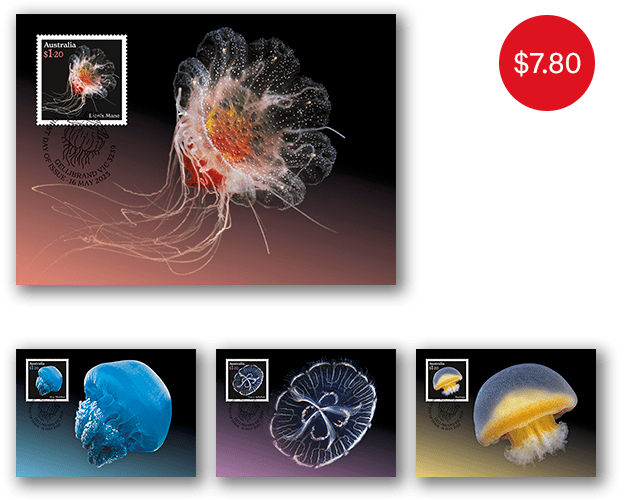
- Set of stamps
- Stamp pack
- Minisheet
- Maxicard set
Additional collectables:
- Booklet of 10x $1.20 Lion’s Mane Stamps
- Booklet of 10x $1.20 Blue Blubber Stamps
- Booklet of 10x $1.20 Moon Jellyfish Stamps
- Booklet of 10x $1.20 Bazinga Stamps
- Gutter Strip of 10x $1.20 Lion’s Mane Stamps
- Gutter Strip of 10x $1.20 Blue Blubber Stamps
- Gutter Strip of 10x $1.20 Moon Jellyfish Stamps
- Gutter Strip of 10x $1.20 Bazinga Stamps
- Chequebook of 200x $1.20 Lion’s Mane Stamps
- Chequebook of 200x $1.20 Blue Blubber Stamps
- Chequebook of 200x $1.20 Moon Jellyfish Stamps
- Chequebook of 200x $1.20 Bazinga Stamps
This content was produced at the time of the stamp issue release date and will not be updated.

